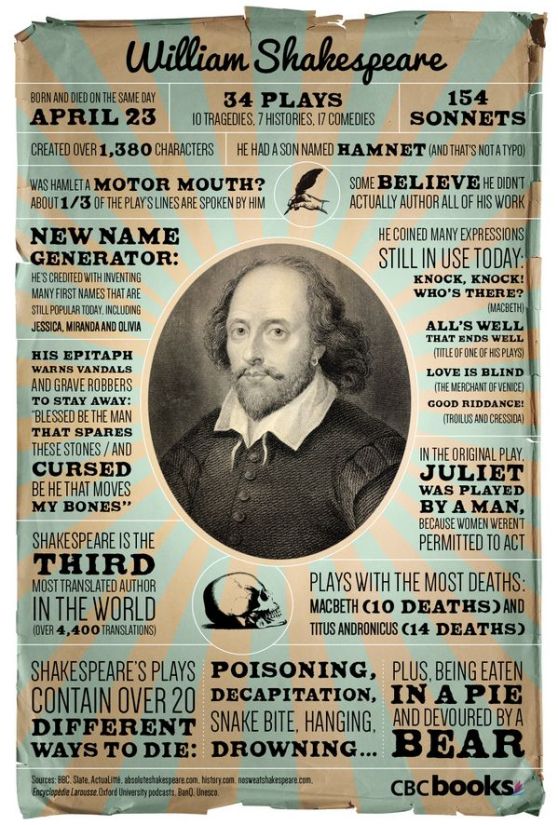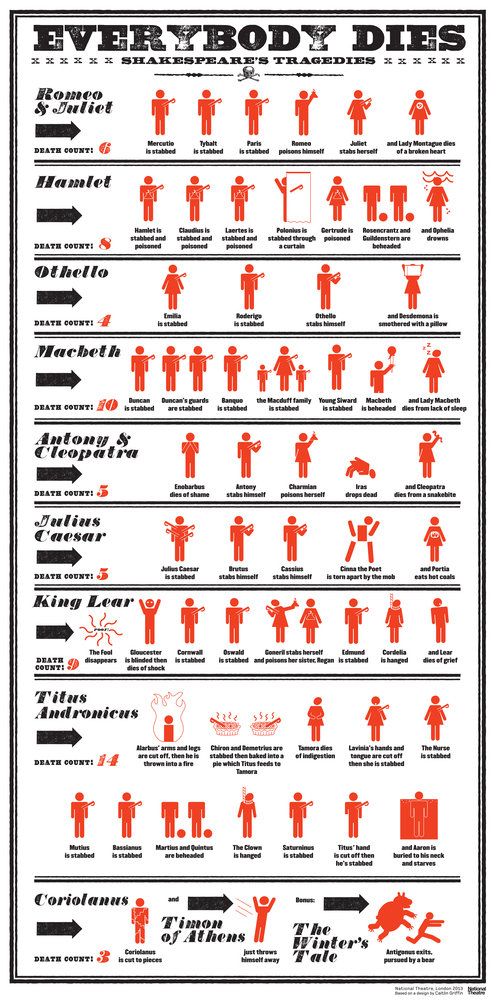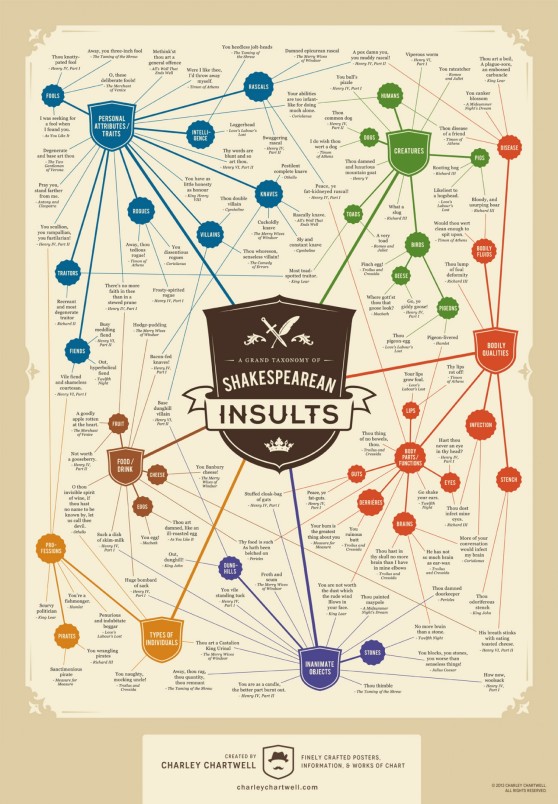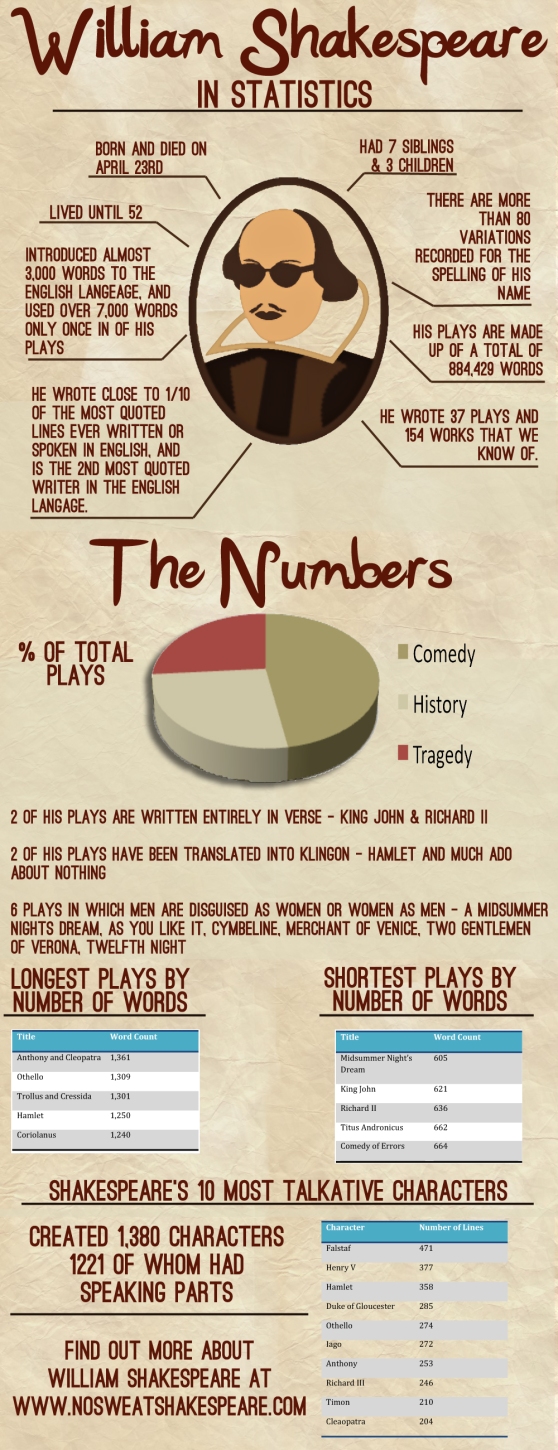Today’s infographics are all about William Shakespeare because it’s the bard’s birthday!
Without further ado about nothing, Behold! the infographics!
Remember that we can use infographics for many purposes, including as a visual text for analysis.
Here are some ideas borrowed and adapted from this google doc:
|
Observe |
| Have students identify and note details.
Describe what you see. What do you notice first? Is there any text you can read? What does it say? Describe anything you see on the page besides words, such as images or decorations. How is the text and other information arranged on the page? · Describe anything about this text that looks strange or unfamiliar. What other details can you see? What information is provided that would help us determine if this information is current and reliable? |
|
Reflect |
| Encourage students to generate and test hypotheses about the source.
What was the purpose of this text? How do you know? Who created it? With what bias might they be approaching this infographic? Who do you think was its audience? How do the choices the author makes reflect the audience? Can you tell anything about what was important at the time it was created? What situations or issues were prevalent at the time? How do these affect what is presented on the infographic? What tools and materials were used to create it? What colors and designs? How do they contribute to the overall impression of the infographic? In what ways do they suit the topic? What is the larger story or context within which this was designed? What can you learn from examining this? If someone created this today, what would be different? |
Question
Have students ask questions to lead to more observations and reflections.
What do you wonder about… who? · what? · when? · where? · why? ·how?
Consider providing them question stems from multiple levels (like in Socratic Seminar): question levels
How could information on this infographic inspire a research question?
What is the over-arching question the infographic-creator seeks to answer?





